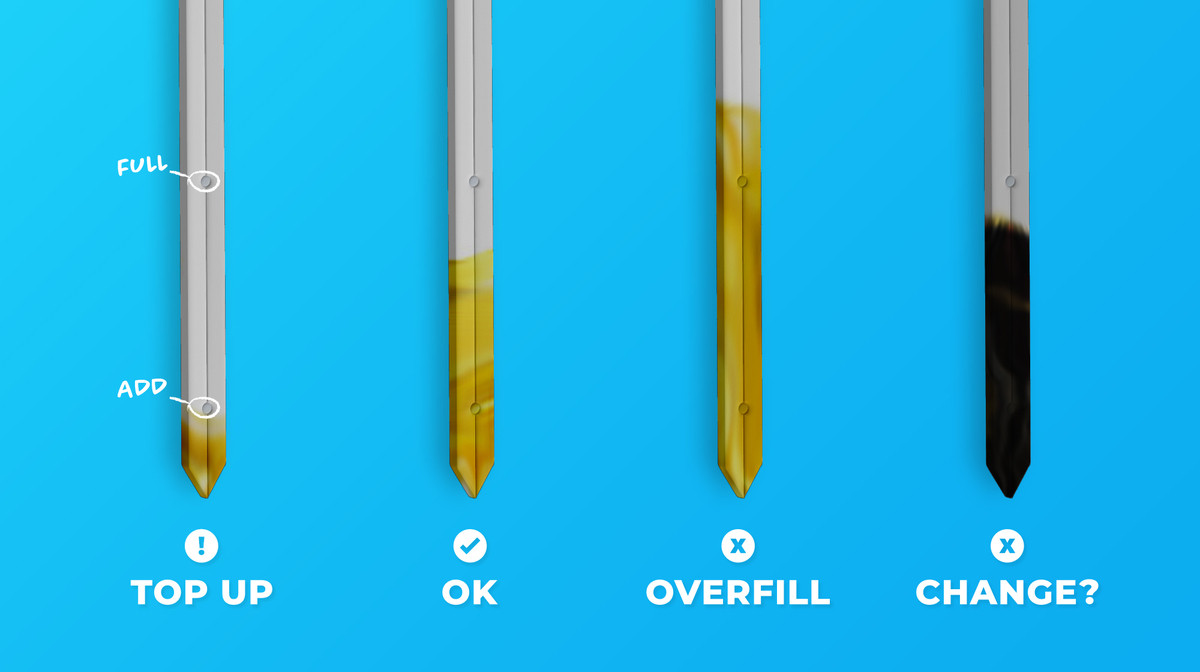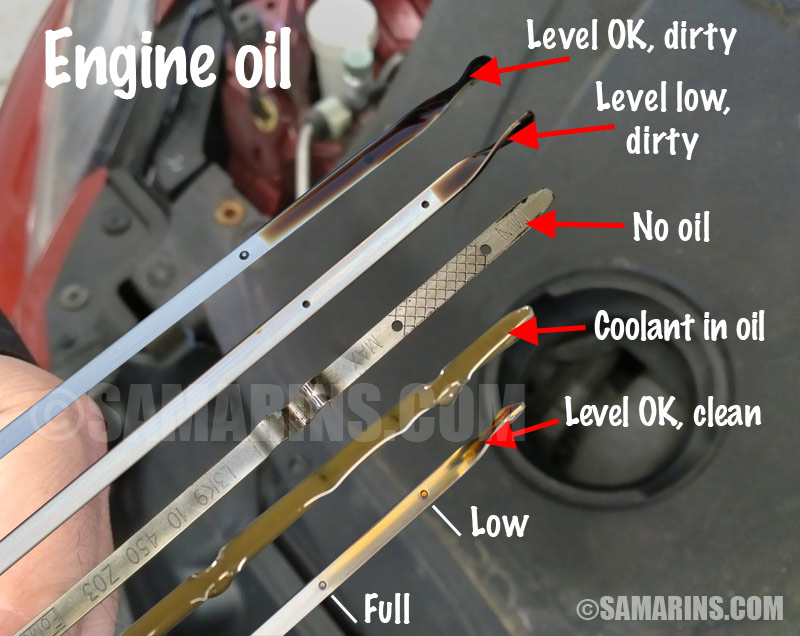Have you ever popped open your car’s hood to check the oil level only to find it’s a strange color? You might be wondering, “What color should my car oil be?” The answer isn’t always clear-cut, as different factors can influence the appearance of your engine oil. But, knowing what to look for can help you catch potential problems early and keep your vehicle running smoothly. Just like checking your tire pressure or topping off your windshield fluid, understanding the color of your car oil is an essential part of car maintenance.

Image: www.canadadrives.ca
One time, my car was making a strange rattling noise. I pulled over to check the oil and was shocked to see it was a thick, black sludge. Turns out, I was running extremely low on oil, and the engine was starting to suffer. That experience taught me the importance of regularly checking my oil and knowing what to look for. Today, I’m here to help you understand the color of your oil, so you can stay on top of your car’s health.
Understanding the Color of Car Oil and Its Significance
Engine oil plays a crucial role in keeping your car running smoothly. It lubricates moving parts, reducing friction and wear, and helps to cool the engine. However, over time, the oil breaks down and becomes contaminated with byproducts of combustion and other contaminants. This wear and tear not only reduces the effectiveness of the oil but also impacts its color.
Engine oil is typically amber-colored when new. However, as it ages, it darkens due to the breakdown of its chemical structure and the accumulation of contaminants. The color of the oil can often be a good indicator of its condition and how long it’s been since its last change.
New Oil: The Golden Standard
Freshly added car oil has a distinct amber or golden color. This healthy oil has gone through extensive purification processes, leading to its vibrant tone. For the first few miles after an oil change, the oil may initially appear slightly darker as it circulates through the engine and begins to pick up trace amounts of residue. However, it should still primarily maintain its golden hue.
Used Oil: The Tell-Tale Colors
As oil ages and works hard to protect your engine, its color gradually changes. This color shift is often a good indicator of how well the oil is functioning and whether it’s time for a change.
Dark Amber or Brown Oil: Oil that’s a dark amber or brown color is still in relatively good condition. While it’s not as fresh as new oil, it’s still doing a good job of protecting your engine. Darker amber-colored oil may be a sign that your car nearing its oil change interval or that you’re using a heavier oil in your engine. This is a good indicator for your next oil change, but not necessarily an emergency.
Black Oil: If your oil is black, it’s a sign that it’s heavily contaminated with soot, carbon deposits, and other debris that builds up over time. Black oil is a clear signal that an oil change is long overdue. Continuing to drive with black oil can lead to engine damage and costly repairs.
Milky Oil: A milky white or slightly foamy appearance in the oil can be a worrying sign. This often points to a leak of coolant into the engine (often called a “head gasket leak”), an issue that requires immediate attention from a mechanic.

Image: www.samarins.com
Factors Influencing Oil Color
There are a few factors that can influence the color of your car oil beyond just its age. It’s helpful to keep these in mind when checking your oil:
- Oil Type: Different types of oil, such as synthetic or mineral oil, can have slightly different starting colors and may darken at slightly different rates.
- Driving Conditions: Frequent short trips or driving in dusty environments can lead to faster oil degradation and darkening due to increased wear and tear.
- Oil Change Interval: Your car manufacturer recommends oil change intervals. Sticking to these guidelines helps ensure that you’re changing the oil before it becomes heavily contaminated.
Tips for Checking Your Oil and Maintaining Its Health
You can check your oil level yourself with your car’s dipstick. It’s best to check it when the engine is cold, as the oil will have settled. Here are some tips for checking your oil and keeping your engine healthy:
- Always refer to your owner’s manual: Each vehicle has a recommended oil type, change interval, and even a dipstick location that may be specific to your make and model. Your owner’s manual is your best guide.
- Check your oil regularly: Ideally, you should check your oil every time you fill up with gas. This is a quick habit that can save you from major engine trouble.
- Use high-quality oil: When it’s time for an oil change, opt for high-quality oil that’s recommended for your car.
- Don’t overfill: Overfilling your oil can cause damage to your engine. Always refer to your dipstick markings.
- Get regular oil changes: Following the oil change intervals recommended by your car manufacturer is crucial for maintaining the health of the engine.
If you notice a dramatic change in the color or consistency of your oil, it’s a good idea to have a mechanic check out your engine. They can diagnose any underlying problems and recommend the best course of action for your car.
Frequently Asked Questions
Q: Is it okay to drive with black oil?
A: No. While driving with slightly darker than amber oil is not urgent, it often signals that your oil is becoming too contaminated. Driving with black oil is a red flag for your engine and can lead to costly repairs.
Q: What if my oil has a milky white color?
A: This is a serious issue, potentially indicating a leak of coolant into your engine. You need to speak to a mechanic about this immediately.
Q: Can I add oil of a different color or type?
A: It’s generally not a good idea to mix oil types as they may not be compatible. Always check your owner’s manual for the recommended oil type for your car.
Q: What are the signs of a bad oil filter?
A: If your engine oil filter is failing, you may notice slow oil pressure, a reduction in fuel efficiency, or even engine knocking.
What Color Should Your Car Oil Be
Conclusion
Checking the color of your engine oil is an important part of maintaining your car. It offers a quick and easy way to assess the health of your engine. While oil discoloration can indicate a need for an oil change, sudden color changes or the presence of unusual colors, such as milky white or green, are red flags that require immediate attention from a qualified mechanic. By staying aware of the condition of your oil, following the recommended oil change intervals, and using high-quality oil, you’ll help keep your car running smoothly and extend its life.
Are you interested in learning more about how to maintain your car’s engine health? Share your questions and thoughts in the comments below.





